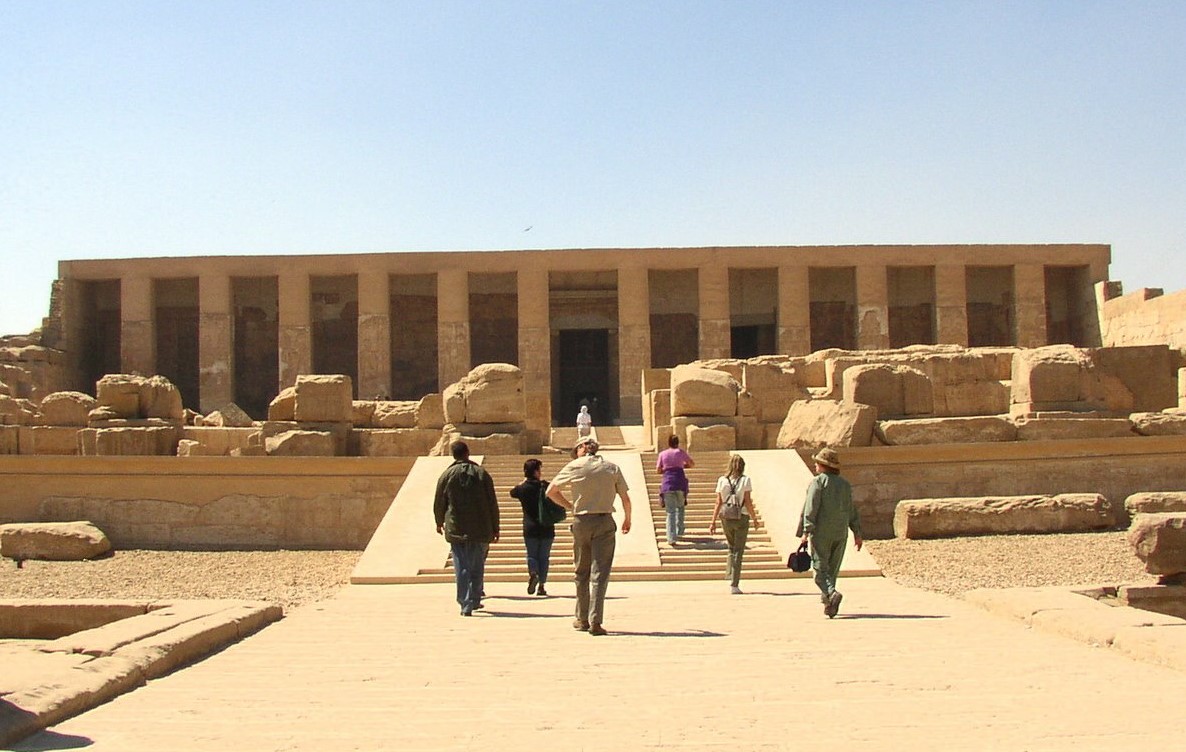Abydos is one of Egypt’s most sacred and storied ancient cities. From the earliest kings to the myth of Osiris, discover why this hidden gem should be on every traveler’s itinerary.

Historical Background
Abydos, located in Upper Egypt near modern Sohag, is one of the oldest and most important archaeological sites in Egypt. It served as the burial place for Egypt’s earliest kings during the 1st and 2nd Dynasties, even before the pyramids were built.
Most famously, Abydos became the cult center of Osiris, the god of the afterlife. For millennia, Egyptians believed that a pilgrimage to Abydos ensured a blessed afterlife. Pilgrims came here to honor Osiris, leave offerings, and connect with the mysteries of rebirth.
But it wasn’t just religious—the art and inscriptions found in Abydos have reshaped what scholars know about ancient Egypt. Perhaps the most famous structure here is the Temple of Seti I, built during the New Kingdom, whose hieroglyphs, craftsmanship, and mysteries still fascinate Egyptologists.
Cultural Significance
Abydos holds powerful spiritual weight for both ancient and modern seekers. It was thought to be the burial site of Osiris’s head, and many Egyptians longed to be buried nearby.
In modern times, Abydos has attracted attention for its “helicopter hieroglyphs”—unusual carvings in the Temple of Seti I that sparked internet theories about ancient flying machines. While largely debunked, the mystique continues to draw curious travelers.
More than mystery, however, Abydos offers peace, sacredness, and a glimpse into the eternal soul of Egypt. It is still a place of pilgrimage—not just for academics, but for spiritual explorers.
🏛️ Must-See Attributes
-
Temple of Seti I – An architectural masterpiece with the famous Abydos King List, a chronological list of kings from Menes to Ramses I
-
Osireion – A subterranean symbolic tomb of Osiris, built in mysterious megalithic style
-
Temple of Ramses II – Less visited, but full of colorful carvings and heroic inscriptions
-
Processional Way – Believed to be used during Osirian festivals and rituals of resurrection
📍 Visitor Information
Location & Access:
Abydos is located about 160 km north of Luxor. It can be reached by private car, tour van, or as part of a day trip from Luxor, often paired with Dendera Temple.
Ticket Information:
Entry to the Temple of Seti I typically costs around 100–140 EGP per adult (subject to change).
Opening Hours:
Daily from 8:00 AM to 5:00 PM
Best Time to Visit:
October to April for cooler temperatures and quieter temple visits.
✨ Unique Experiences
-
Photography Tip:
Abydos receives fewer visitors, so it’s ideal for low-crowd, high-detail photography, especially of reliefs and temple corridors.
-
Spiritual Connection:
Some modern pilgrims report deep meditative states and a feeling of timelessness while inside Seti I’s temple—especially near the Osireion.
✅ Quick Facts Box
📍 Location: Sohag Governorate, Upper Egypt
🕒 Opening Hours: 8 AM – 5 PM
🏛 Top Sites: Temple of Seti I, Osireion, Ramses II Temple
🌟 Known For: Cult center of Osiris, Abydos King List, symbolic tombs
📸 Don’t Miss: The “Flower of Life” carving and intricate ceiling reliefs
Conclusion
Abydos is more than just a stop on the map—it’s a portal into ancient Egypt’s soul. With art, mystery, and mythology woven into its stone, it invites travelers to slow down, go deeper, and touch the sacred.
Ready to Explore?
Book your Abydos Day Tour from Luxor with Luxor Booking Tours and walk in the footsteps of kings, priests, and pilgrims.
Links & Further Reading
✈️ Planning your visit? Consider combining with: Abydos & Dendera Day Tour
🌐 Learn more: UNESCO on Ancient Thebes
Author’s Note
“Abydos isn’t just history—it’s a heartbeat. Every column, every inscription, every whisper in the air speaks to something eternal.”